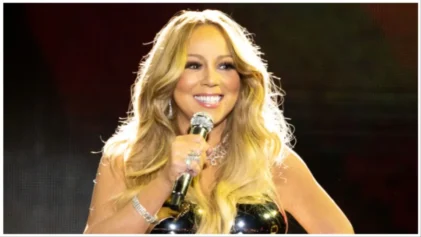Just weeks before the highly anticipated August 16 release of Lee Daniels’ The Butler, which is based on the life of legendary White House service worker Eugene Allen, and stars Forest Whitaker and Oprah Winfrey, co-star Mariah Carey is surprisingly the center of attention.
A photo of Carey as the character Hattie Pearl, who many presume is a field slave picking cotton, has sparked lively discussion.
Initially, several readers on the Grio commented that Carey’s character, if she existed during the slavery era, would have been a “house” slave because of her skin color and mixed-race heritage. Other readers, like Kimberly Whitehead, challenged the prevailing notion that all “mulattoes” were house slaves.
The house vs. field debate
“Due to contrary belief,” Whitehead wrote, “ALL MULATTOES DIDN’T WORK IN THE HOUSE [sic]. . .they worked in the field too . . .” Since depictions of fairer skin slaves on screen and in books have almost exclusively tagged them as house slaves only, comments like Whitehead’s enlightened many.
“Yes, most light-skinned slaves were in the house but not all, and some were out in the fields to “watch” the others,” co-signed Grio reader Dionne Dobbins of Cheverly, Maryland. “Plus, there were only so many positions in the house,” she adds.
According to pioneering women’s history scholar Elizabeth Fox-Genovese, female slaves were not usually exclusively house slaves.
“On the largest plantations, especially the more pretentious ones, a woman was more likely to be sent from the house to help out in the fields than the reverse,” wrote Fox-Genovese in her classic Within the Plantation Household: Black and White Women of the Old South.
Also many female slaves, regardless of color, often grew up around the house, helping older female slaves and serving as playmates to the master’s little girls.
So, at different points, they could have easily have worked in both the house and in the fields. It was mostly dependent upon need. Also, it is important to note that a large number of house slaves were not mulatto.
Proving this point, Ardra Hutchinson posted that “No, before my great aunt died she was Carey’s complexion. She told of having to eat out of the pig trough just to get enough to eat and work in the field. And the darker complexions worked in the kitchen because they could cook.”
A surprisingly positive reaction to the role
Interesting, overall, is the positive response to the presumption that Carey’s character plays a field slave.
“I love the idea!” posted Kim Clark of Riverdale, Georgia. “I’m proud she is growing as an Actress! [sic]”
Viola Davis did not receive universal praise for playing a maid in The Help, which was set in Jim Crow-era Mississippi, so one would presume Carey playing a field slave would have generated some backlash.
Perhaps this is because the audience sees Carey’s willingness to play such a role as an admission of her status as a black woman, especially since some feel she has not readily identify herself with black culture in the past.
“Folks need to stop ignoring the fact that she is black,” posted Tamara Inthelab Graham in reference to Carey. “On every plantation there were mixed children. ON EVERY one.”
It’s surprisingly that a simple photo from The Butler, with no confirmation about the role Carey actually plays, generates this kind of response and positive conversation.
As Badili Ifadoyin Jones-Goodhope of Miami posted in support of Kimberly Whitehead’s comment, “It’s time to break all the color stereotypes about who worked where because of their skin color.”
“There was a lot more complexity about our history than people want to acknowledge,” added commenter Dionne Dobbs.
The Django effect
Certainly the debate surrounding director Quentin Tarantino’s blockbuster film Django Unchained, which was set during slavery, demonstrated that.
While Tarantino has been called out for not presenting a realistic view of slavery by some critics, there is no denying Django’s impact on the public’s consciousness.
A year ago, would readers have been as open to the idea of Carey even playing a slave if Django had not performed so well at the box office? Still, at this point, we cannot be certain what Carey’s role is. So far, a breakdown of Carey’s role is not widely available.
Still, it is interesting to note that Kerry Washington, who is brown-skinned, played a house slave in Django.
As a matter of fact, the the other house slaves were also much darker than Carey’s complexion in Django. The actress Nichole Galicia who played Sheba, the slave mistress of Leonardo DiCaprio’s villainous plantation owner Calvin Candie was also a darker hue. And so is a young slave girl Django encounters during a plantation scene.
Whether intended or not, Tarantino subtly challenged our notions of what slaves, especially women, looked like.
To be clear, The Butler, which covers Allen’s service to eight presidents from 1952 to 1986, is not about slavery. But it is definitely the discussion it’s already generating, suggesting that more films and dialogue on this subject is warranted.
Perhaps this exchange will encourage Daniels, who has a flair for crafting provocative films, to explore this topic more. It just might be time for someone else to attempt an epic exploration of the mulatto slave that the 1993 Alex Haley-based TV series Queen starring Halle Berry attempted.
Maybe, the time has come to add complexity to how we view the biracial female slave archetype.
Source: TheGrio


